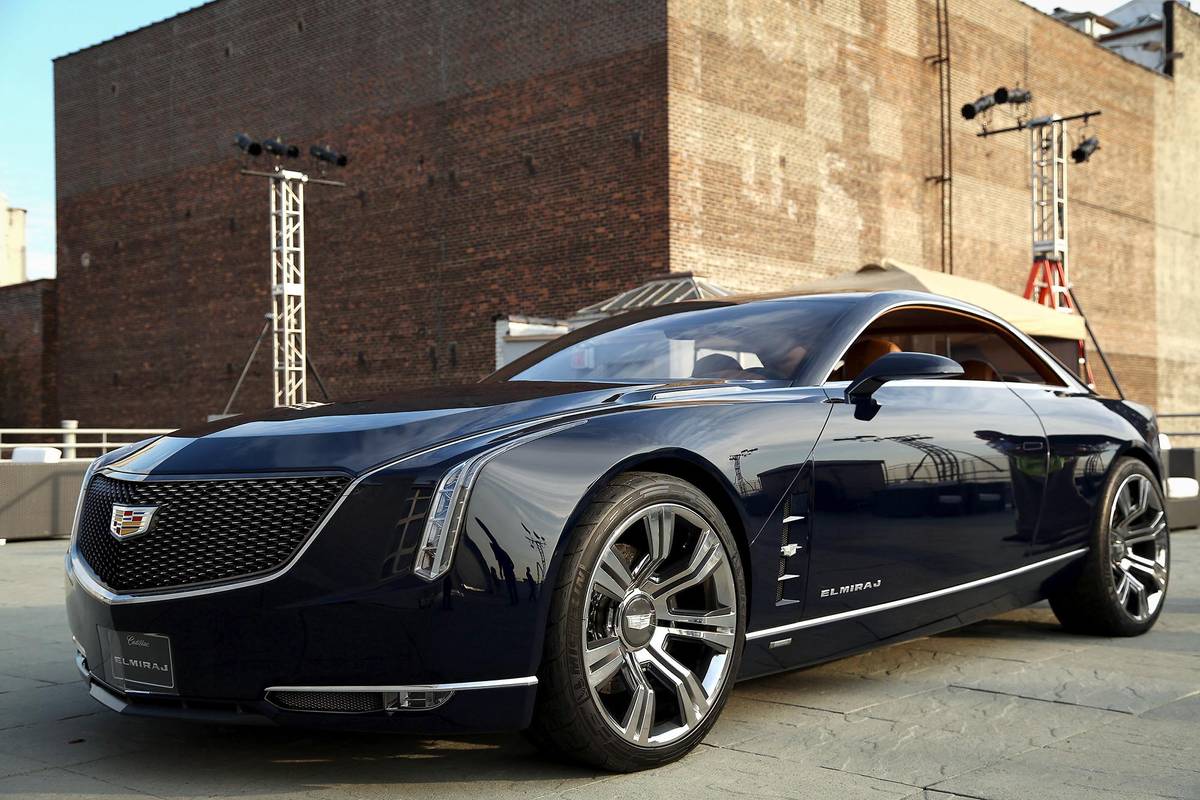Mercedes EQC, Self-Driving Audis and Other Things That Never Came to Be


“The road to hell is paved with good intentions,” an old proverb goes. Automakers love to trumpet coming attractions, and they probably keep more promises than most campaigning politicians. But from time to time, they’re guilty of underdelivering on those promises — and being a lot quieter about sharing that somewhere in the company a green light turned red, or good intentions bowed to eventual realities or unforeseen circumstances. Who predicted the COVID-19 pandemic or ensuing microchip shortages, for example?
Still, that doesn’t keep plenty of folks from wondering, “Whatever happened to that?” We looked back at a few great expectations from recent years that didn’t happen, at least not yet.
The Electric Benz That Was Coming Soon Until It Wasn’t
Related: 2022 Mercedes EQS: Think of It as an Electric S-Class

Remember the much-hyped Mercedes-Benz EQC, an SUV first promised in 2018 for the U.S. market a couple years later? It was based on the brand’s top-selling vehicle in the U.S., the gasoline GLC compact SUV, and it was expected to have an estimated range of around 200 miles. Production did get underway for the European market, and Mercedes even announced a price for the U.S. (about $70,000 to start), but the automaker kept delaying the launch. Mercedes eventually told Cars.com that “following a comprehensive review of market developments, the EQC will not be offered in the U.S. for now.”
The all-electric SUV would have competed with rivals like the Jaguar I-Pace and Audi E-Tron, which had similar luxury — and similarly modest range. The reality is that neither EV has sold that well; technology and rising buyer expectations have made at least 300 miles of range a de facto cost of entry, even for cheaper EVs. A current Tesla Model Y SUV offers more than 300 miles at prices $10,000 to $15,000 cheaper than the EQC would have been.
Now Mercedes has pivoted to introducing an electric EQ line to the U.S., starting at the top with a halo car, the uber-luxury flagship EQS sedan due later this year. The S-Class EV is Mercedes’ first car designed as electric from the pavement up, with an all-new electric platform. It has the latest EV technology, range that could approach 400 miles, sophisticated driver-assistance tech, a boatload of luxury features including a door-to-door dashboard display, and high-status pricing. Call it Mercedes’ effort to show Tesla what a real S model is like. Next up in 2022 will be the EQE sedan, a sort of scaled-down EQS that’s also on the new platform and figures to be priced a bit lower. The EQS won’t rake in the sales volume of a compact SUV like the EQC, but it’s likely to be more profitable and do more for Mercedes’ EV image.
To be fair, promises that miss the mark are more common than not in the fast-changing EV world, where vehicles typically take longer to arrive than predicted — if they arrive at all. Tesla CEO Elon Musk’s Twitter feed could be a case study.
Audi A8 No-Eyes Driving? No Way

The redesigned 2019 Audi A8 made its U.S. debut at the 2017 Los Angeles Auto Show with the promise of being the first production car to take our relationship with autonomous driving to the next level — to Level 3 on SAE International’s scale of six levels of automation (running from Level 0 to Level 5). That would have broken new ground, given current driver-assistance systems — even the likes of GM’s Super Cruise and BMW’s Extended Traffic Jam Assistant, which allow hands-free driving in certain situations — are Level 2, meaning you have to pay attention and be able to take back control of the car at any time. Such systems even implemented devices that monitor drivers to make sure they aren’t sleeping or texting. At Level 3, by contrast, the car can sense enough of the road around to take over driving under specific conditions, and alert drivers if it needs them to take back driving responsibility. Meanwhile, you could, say, watch a video on the dashboard display.
Audi’s Level 3 aspirations were limited. Its Traffic Jam Pilot, as the system was called, would drive only on highways with a physical barrier separating oncoming traffic, and only at speeds of up to 37 mph. But even that was a step into a new world in which, for a time, the car — not a human — was responsible for safe driving. Global safety officials still can’t agree how to regulate the safety and reliability of such systems, while lawyers and insurance companies continue to wrestle with how to handle liability for missteps — whether by the car or by the driver who was supposed to be ready to take back the reins. The questions are thorny enough that some automakers, including Ford and Volvo, reportedly plan to skip Level 3 altogether to plan for higher levels of autonomy where a human driver is not part of the equation. For its part, Audi has abandoned the Level 3 effort at least for the current generation of the A8. About a year after its U.S. auto-show debut, the sedan hit dealerships without any such capability; officials told us the U.S. market, which is “much larger and more varied in terms of infrastructure, legal frameworks and regulations” at state and federal levels, “requires more testing in the different regions.”
Now, the A8 apparently won’t have Level 3 functionality in any market. Automotive News quoted an Audi official in April 2020 as saying there was no legal framework for Level 3 anywhere in the world on a production car.
The larger reality is that autonomy for vehicles has turned out to be hard. Even Audi’s limited system involved 24 camera, radar, sonic and laser sensors to create a picture of the road. And while much of the technology is available, the last bits needed for a fully reliable system have been slow going. Much of the tech world lives by the Facebook go-go credo of “move fast and break things,” but that’s not a great motto for car development.
As Toyota President Akio Toyoda reportedly said last month after one of Toyota’s self-driving, low-speed people movers (with a human safety driver aboard, no less) hit a visually impaired athlete in the Tokyo Paralympic Games village: “It shows that autonomous vehicles are not yet realistic for normal roads.”
Where’s My Fuel-Cell Electric Car?
Hydrogen-powered fuel-cell EVs have been around the corner for decades, but enthusiasm and government support for battery electric vehicles has marginalized them in the U.S., despite their appeal in freedom from the plug. Outside a few counties in California that have a tiny universe of hydrogen fueling stations, you’ve probably never seen a fuel-cell vehicle on U.S. roads. Honda, a pioneer that developed several generations of limited-production fuel-cell cars, reportedly ended production last month of its latest Clarity fuel-cell car, though it says it hasn’t given up on fuel cells. Most automakers dipped a toe in the fuel-cell pool, mostly in tech partnerships. GM was a believer for a while, and had partnerships (even with Honda) plus a test fleet based on the Chevrolet Equinox, but now seems all-in on battery electrics. For now, Toyota’s Mirai sedan and Hyundai’s Nexo SUV are carrying the fuel-cell flag, at least in California; like Honda, the companies say they have not given up on the tech.
Hyundai even upped its commitment this month with a vision it dubbed the Hydrogen Wave, which includes plans for a fuel-cell system that’s smaller, more durable and less expensive. As part of its announcement, the South Korean automaker exhibited a blitz of hydrogen fuel-cell EV concepts, including a city car, a sports car, a bus and an ironic mobile hydrogen generator designed to rescue plug-in EVs that run out of juice. And one, combining two future promises, was a cabless freight carrier with a trailer that had fuel-cell electric power units intended to operate autonomously.
A World-Class Cadillac Flagship?

A series of three Cadillac concepts, starting with the Ciel convertible in 2011, the big Elmiraj coupe in 2013 and the Escala concept sedan in 2016, made it seem like the rebuilding of Cadillac into a top-tier luxury brand might be led by a flagship sedan with world-class style and technology. It would be a six-figure halo vehicle that a select few would buy — and even fewer might drive themselves in — but would cast a glow in which the brand’s SUVs and lesser sedans could bask. The Escala could have been Cadillac’s Mercedes S-Class.
Instead, we got a mishmash of vehicles in search of a theme, and now there’s another reimagining of Cadillac into an all-electric brand. The world doesn’t need another big car, but would it hurt Cadillac to have an electric Escala to rival the Tesla Model S and forthcoming Mercedes EQS?
Never Say Never: The Mid-Engine Corvette
Some automotive promises technically aren’t broken; they just are a long time coming. Our previous look at promises not kept, published back in 2013, noted an indeterminate delay on diesel light-duty pickups that eventually came to pass. The same is true for the long-awaited mid-engine Chevrolet Corvette, which finally rolled out as a late 2020 model in the form of the C8 Corvette Stingray.
But expectations for a mid-engine ‘Vette, possibly as early as the fourth-generation C4 Corvette, were raised half a century ago with a prototype developed by legendary Corvette engineer Zora Arkus-Duntov and GM designer Bill Mitchell. The concept went through several incarnations — including with an experimental rotary engine — and the cars became stars of the 1970s auto-show circuit and various magazine covers. The last hurrah at the time was the Aerovette concept, with a dramatic design that featured a Chevy small-block V-8 engine under the rear glass and bifold, gull-wing doors (think the Falcon Wing doors on a Tesla Model X) before GM abandoned the idea for more than four decades and four generations of the ‘Vette. Today, that Aerovette is in the GM Heritage Center collection.
More From Cars.com:
- Which Cars Have Self-Driving Features for 2021?
- Here Are the New Electric Vehicles Planned by 2025
- 2020 Chevrolet Corvette Stingray Review: We Drive the $60,000 One
- 2023 Mercedes-EQ EQE: Like the EQS, in a Smaller Package
- Cadillac Escala Concept Photo Gallery
- 2021 Polestar 2 to Take on Tesla Model 3 With $61K Starting Price
- Kia Debuts Tesla-Fighting EV6 Electric SUV With Up to Nearly 600 Horsepower
Cars.com’s Editorial department is your source for automotive news and reviews. In line with Cars.com’s long-standing ethics policy, editors and reviewers don’t accept gifts or free trips from automakers. The Editorial department is independent of Cars.com’s advertising, sales and sponsored content departments.

Former D.C. Bureau Chief Fred Meier, who lives every day with Washington gridlock, has an un-American love of small wagons and hatchbacks.
Featured stories




